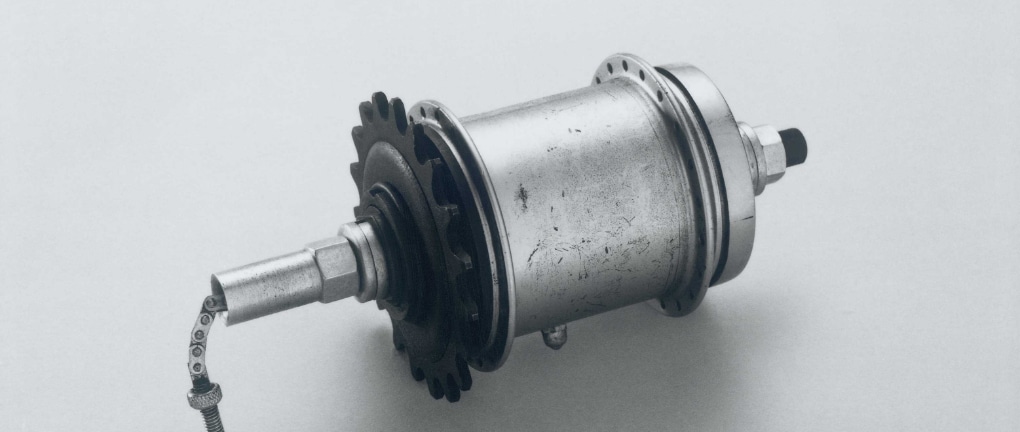
Origin of Shimano Internal Geared Hubs Continuing Engineering Innovation
To cultivate a market following the Single Freewheel, Shimano began developing shifting systems. Taking advantage of a cycling boom in the mid-1950s in Japan, Shimano released a 3-speed derailleur in 1954. However, this boom was short-lived and later Shimano was forced to pull out of manufacturing derailleurs. The next product that Shimano launched was an internal geared hub in which a shifting device was incorporated into the hub. Since internal geared hubs required less maintenance and could be easily used both for leisure and daily practical use, the market gradually expanded. In 1957, Shimano put an internal geared “3-speed hub” on the market. Since the first model, which was modeled after overseas internal geared hubs, was bulky and heavy, Japanese people, who were not familiar with shifters, could not grow accustomed to it. Shimano recognized a need for improvement and research and development based on its own viewpoint, and launched market research, product planning and engineering innovation. In 1958, the following year, Shimano released a model that was lighter and more compact. In 1960, Shimano introduced a twist-type shifter that enabled the rider to shift while maintaining a grip on the handlebar, receiving high recognition. Starting with this product, internal geared hubs grew into core products for Shimano.















